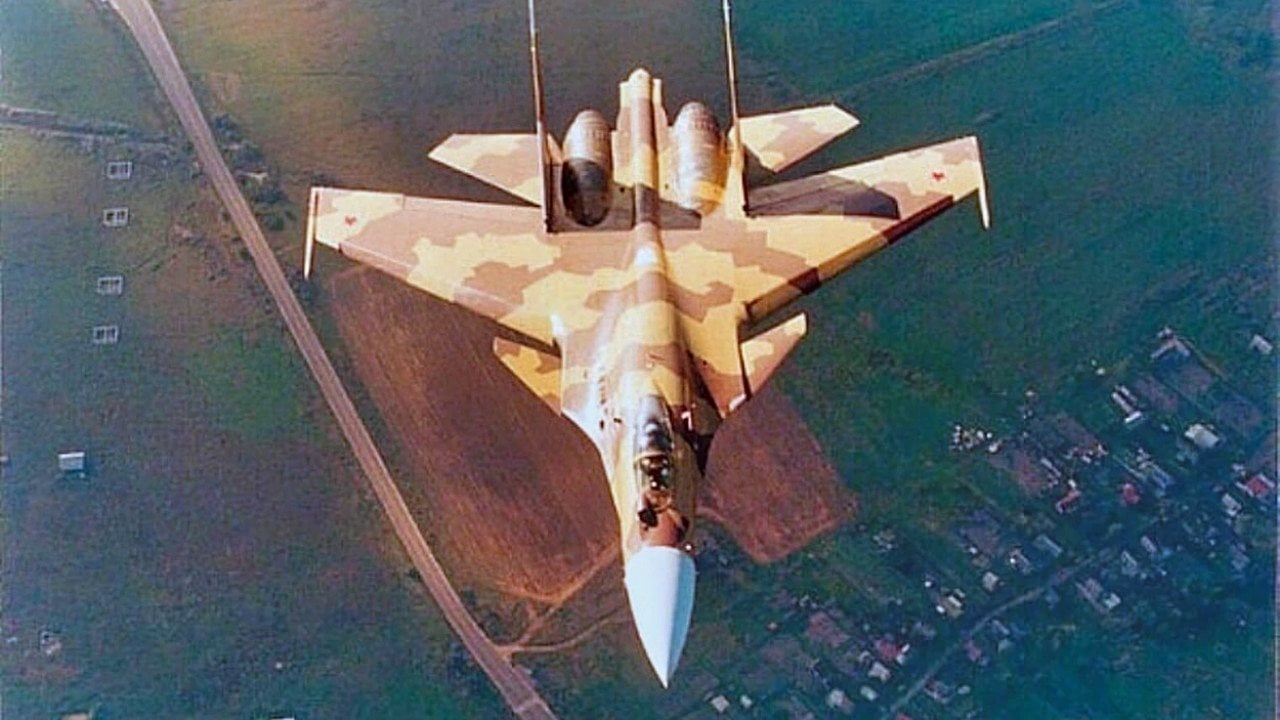Russia’s Su-37 'Terminator' Fighter Is a Tragedy in the Air
The Su-37 fighter was likely never going to achieve the kind of notoriety that its designers said it would. Because the Soviet Union collapsed, the Su-37 did not even take flight until 1996.
When the Sukhoi Design Bureau, a Soviet (and now Russian Federation) defense firm, first proposed the Su-37 “Terminator,” it made the claim that the new multirole warplane had almost no limitations in terms of its angle-of-attack. In essence, the plane was the most maneuverable warplane of its time.

Despite these claims, however, the Su-37 has not lived up to the hype. Indeed, as a derivative of the failed Soviet-era Su-27 demonstrator plane, probably one of the worst birds the old USSR ever created, the Su-37 was likely never going to achieve the kind of notoriety that its designers said it would.
Su-37: The most maneuverable modern warplane?
Because the Soviet Union collapsed, the Su-37 did not even take flight until 1996. It appeared at that year’s Farnborough Air Show where, according to Peter Suciu, “it employed the ‘Super Cobra’ maneuver.”
This move is a famed combat maneuver where the pilot cuts his airspeed to almost nothing, forcing the attacking craft to overshoot. The Super Cobra, as Suciu reports, is similar but the pilot carries the plane “past the vertical, until he then push[es] the nose straight up and [holds] the position momentarily before allowing it to fall back to flight level.”
The Russian pilot who did this caused quite a stir.
Again, the Su-37 was demonstrated a year later at the Paris Air Show where it was the talk of that year’s event. Potential investors were brought in to view the plane. The Russian designers were overjoyed with the amount of interest and buzz their bird was receiving. Yet, ultimately, no production orders were given. The plane languished in Russia.
No interest, No Program
One of the reasons behind the Su-37’s problems has been the fact that it is reportedly a difficult plane to pilot. In 2002, for example, a Su-37 suffered a software glitch after its horizontal stabilizer broke off in flight. The reason the stabilizer likely broke off was because of the fact that the unit in question had been taken to its operational limits multiple times by a variety of Russian pilots over the years and had been poorly maintained.
Of course, the context is key here. Russia in 2002 was still very much shaking off the doldrums of its post-Soviet malaise. With money tight, corners had been cut in terms of maintaining all the advanced platforms that Russia possessed after the collapse of the Soviet Union. Everything suffered as a result.
Ultimately, the Su-37’s lifespan was ended as a result of the crash.
Still, most analysts believe that the technology undergirding the Su-37 was advanced. So, while the Su-37 itself may have been terminated because of the lack of investor interest and the crash, the Su-37’s influence lives on as the technologies supporting it were incorporated into multiple newer Russian planes.
About the Author:
Brandon J. Weichert, a National Interest national security analyst, is a former Congressional staffer and geopolitical analyst who is a contributor at The Washington Times, the Asia Times, and The-Pipeline. He is the author of Winning Space: How America Remains a Superpower, Biohacked: China’s Race to Control Life, and The Shadow War: Iran’s Quest for Supremacy. His next book, A Disaster of Our Own Making: How the West Lost Ukraine, is available for purchase wherever books are sold. Weichert can be followed via Twitter @WeTheBrandon.


